|
We have developed several handouts that will assist in dealing with stucco
and whitewash in cemeteries. Stucco is often found on box tombs and vaults --
and frequently this stucco was whitewashed. Improper repair has often
compromised not only the beauty of these finishes, but also their functionality.
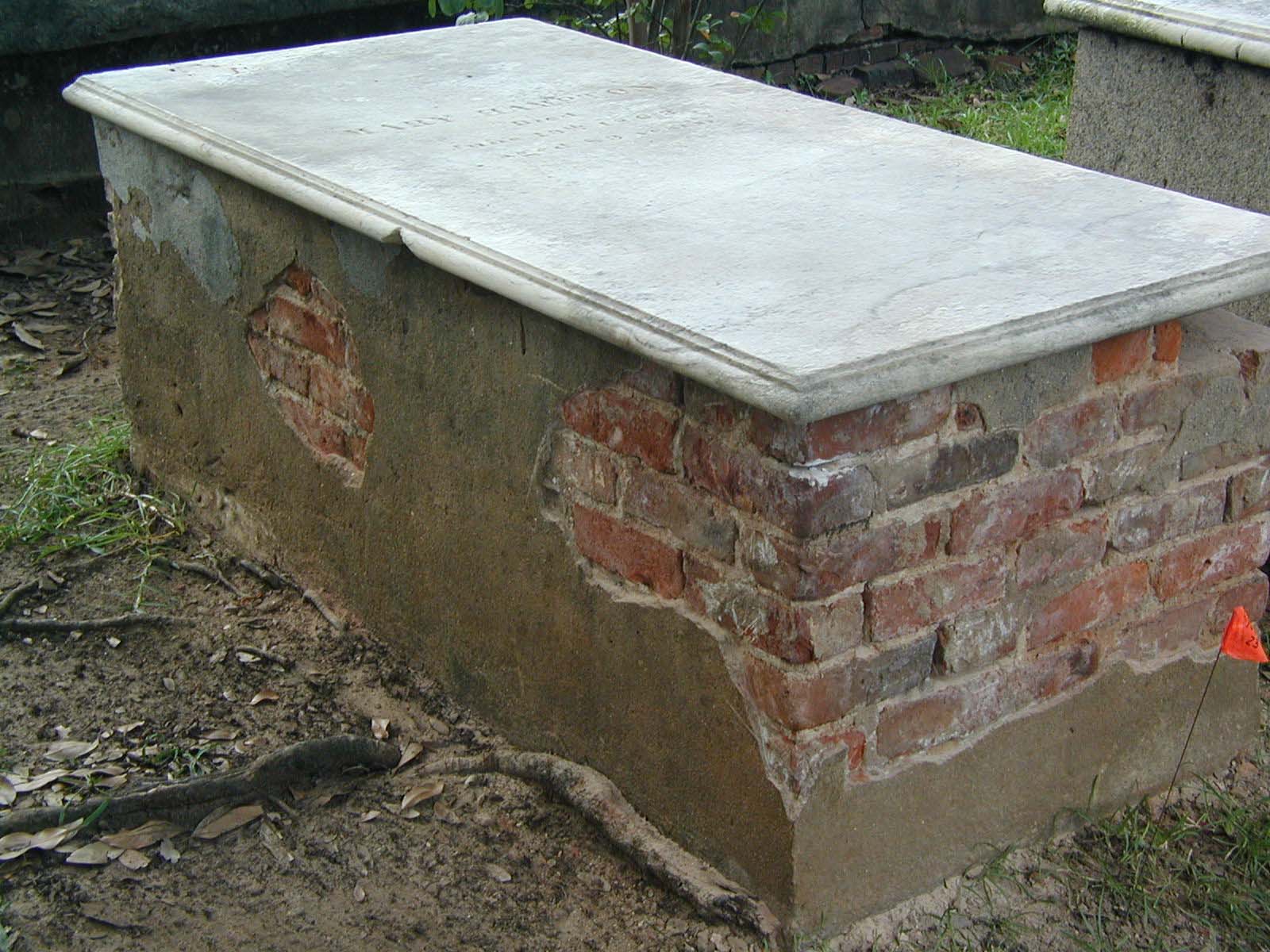 Typical
box tomb that has had a hard Portland cement stucco applied as an old repair.
This stucco was inflexible and failed. The first step in the treatment is to
remove whatever old material that falls away easily or sounds hollow when gently
tapped. The remaining stucco is undercut to provide a key for the new stucco
being applied. Typical
box tomb that has had a hard Portland cement stucco applied as an old repair.
This stucco was inflexible and failed. The first step in the treatment is to
remove whatever old material that falls away easily or sounds hollow when gently
tapped. The remaining stucco is undercut to provide a key for the new stucco
being applied.
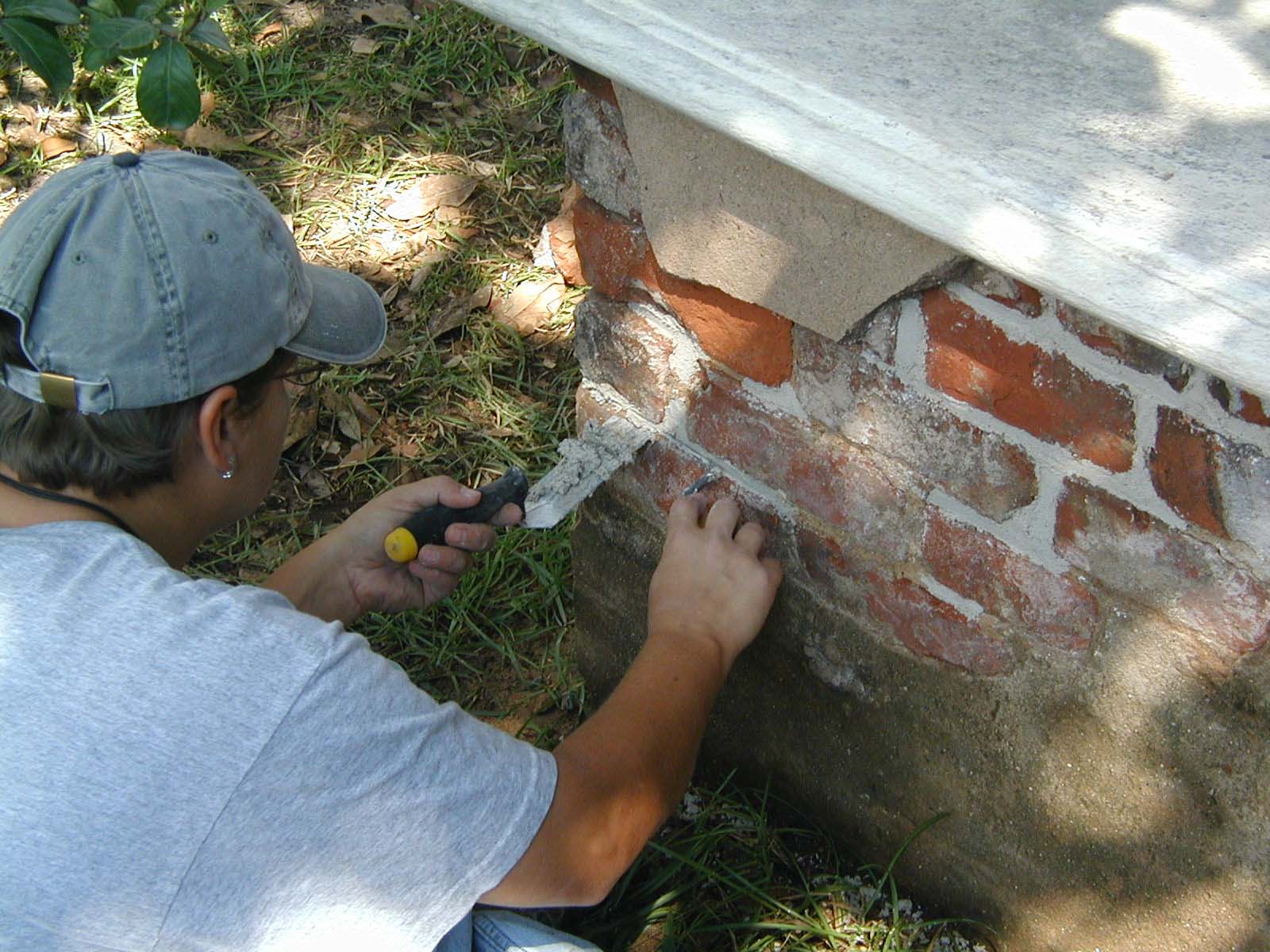 Stucco
is not intended to fill large mortar joint gaps, so before it can be applied,
the box tomb must be repointed. In the case of this tomb, some brick were so
loose that they had to be removed and reset. The mortar being used is a 1:3 mix
of
NHL 3.5 and sand from Virginia Lime Works. The mortar must then cure prior
to the application of the stucco. Stucco
is not intended to fill large mortar joint gaps, so before it can be applied,
the box tomb must be repointed. In the case of this tomb, some brick were so
loose that they had to be removed and reset. The mortar being used is a 1:3 mix
of
NHL 3.5 and sand from Virginia Lime Works. The mortar must then cure prior
to the application of the stucco.
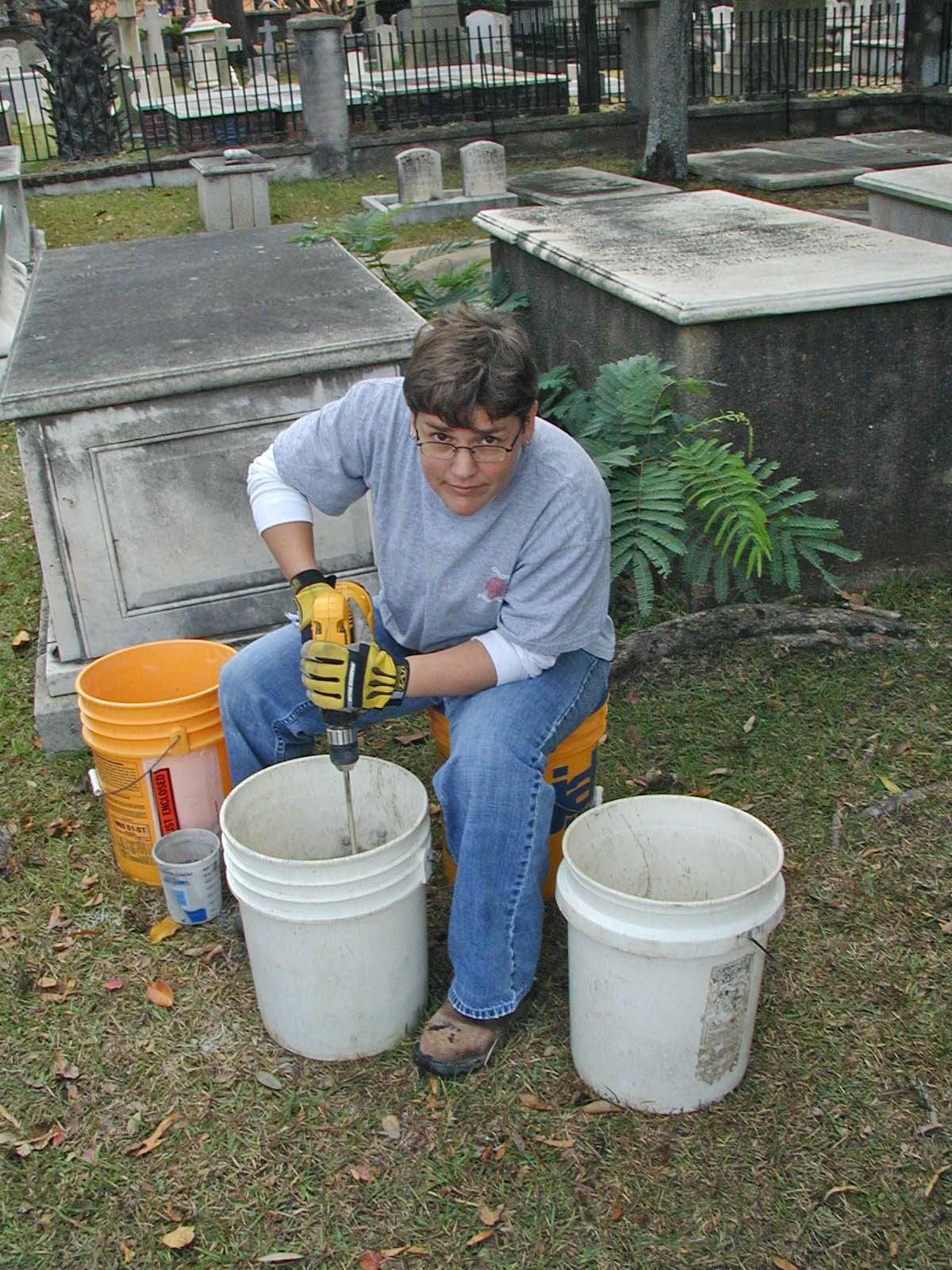 The
stucco used for this treatment is
Jahn M60 from Cathedral Stone. This is highly breathable and contains no
latex or acrylic bonding agents. The
stucco used for this treatment is
Jahn M60 from Cathedral Stone. This is highly breathable and contains no
latex or acrylic bonding agents.
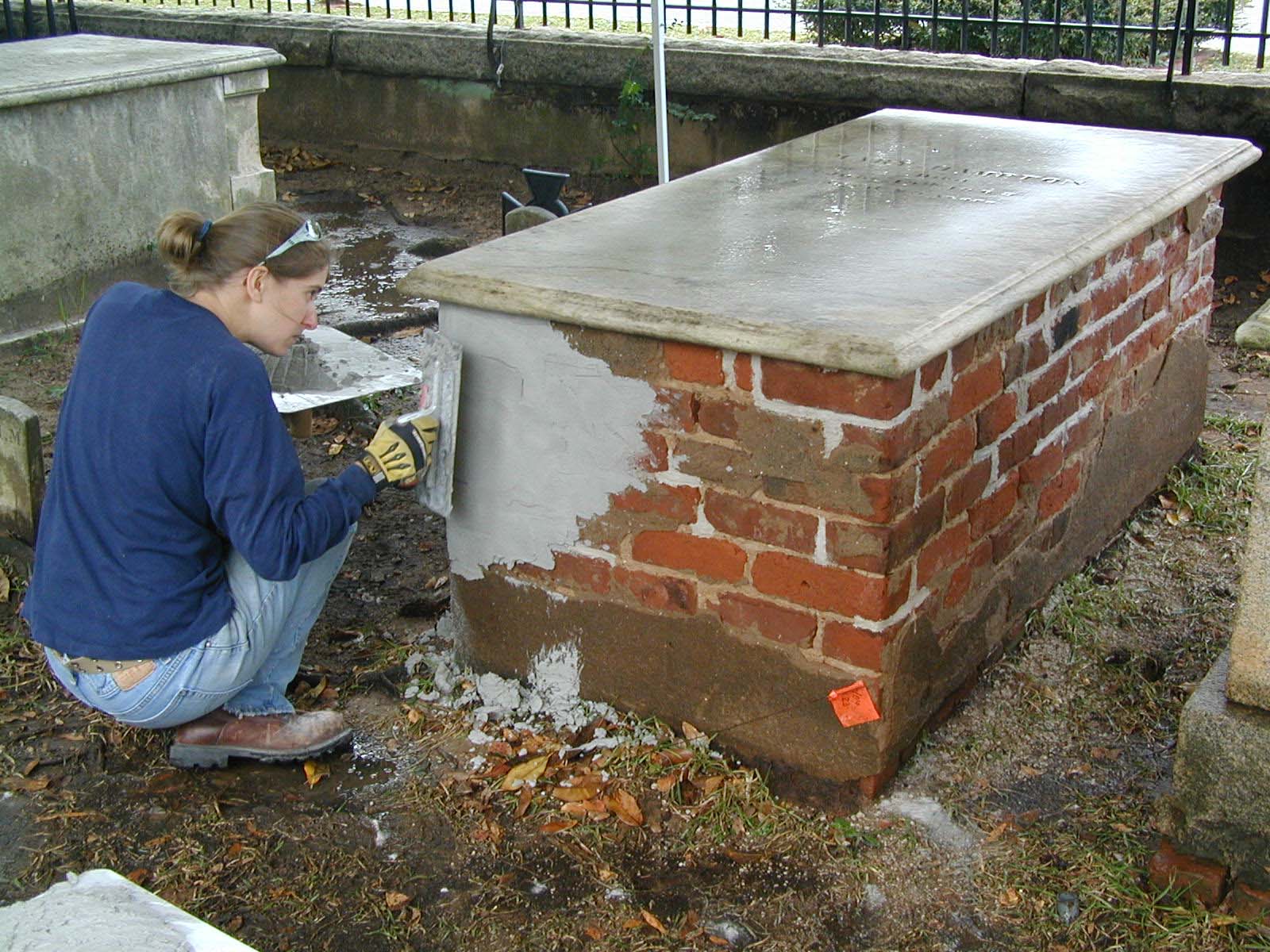
The brick must be thoroughly wetted prior to application of the stucco, which
is applied like any plaster or rendering. The stucco being used was not color
matched since the client desired a top coat of traditional whitewash after the
stucco had completely cured.
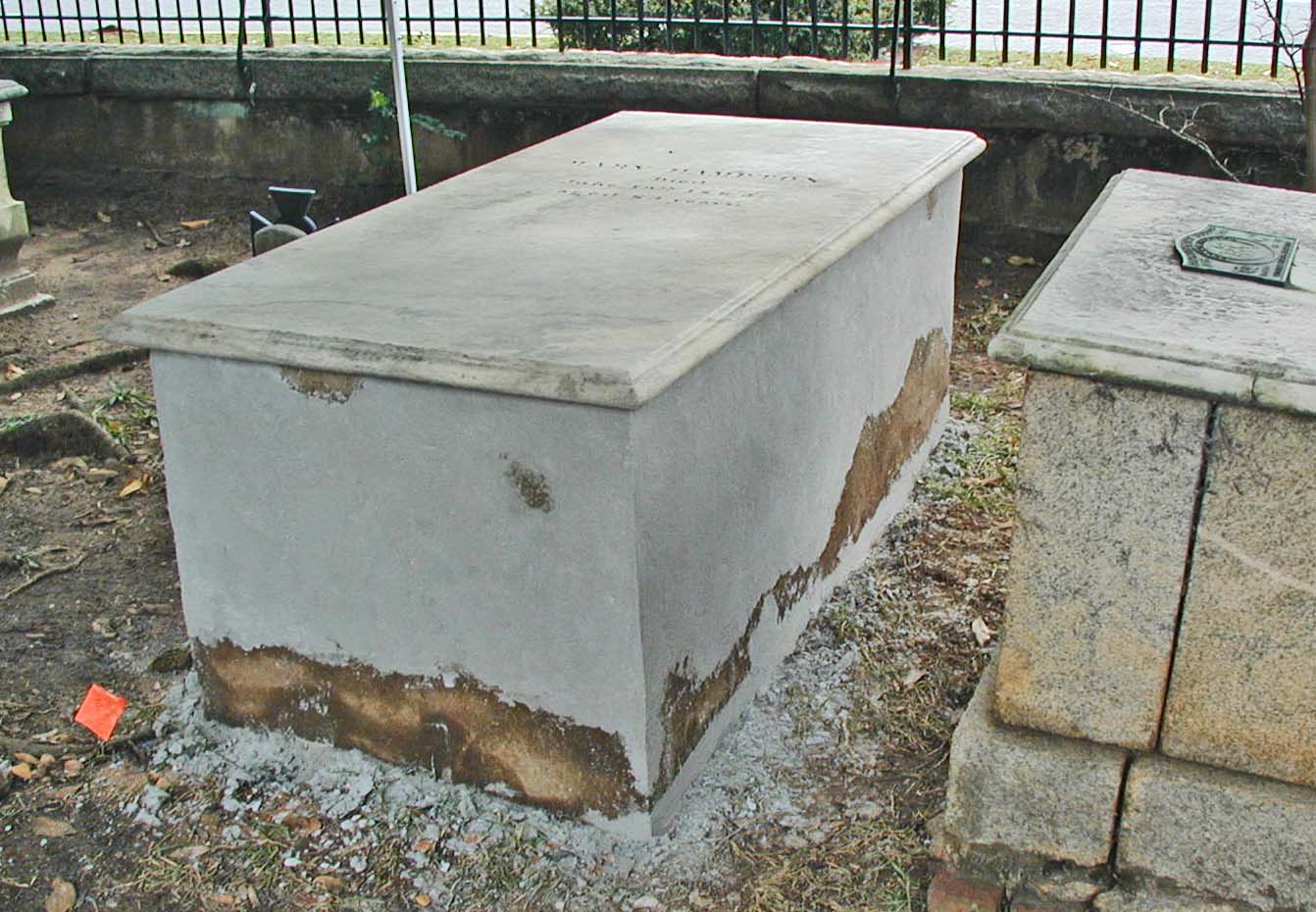 The
tomb has had the new stucco applied around the small areas where the previous
Portland cement stucco was still firmly adhering. With color matching provided
by Cathedral Stone no whitewashing would have been necessary and it would have
been difficult to distinguish the old from new stucco. The
tomb has had the new stucco applied around the small areas where the previous
Portland cement stucco was still firmly adhering. With color matching provided
by Cathedral Stone no whitewashing would have been necessary and it would have
been difficult to distinguish the old from new stucco.
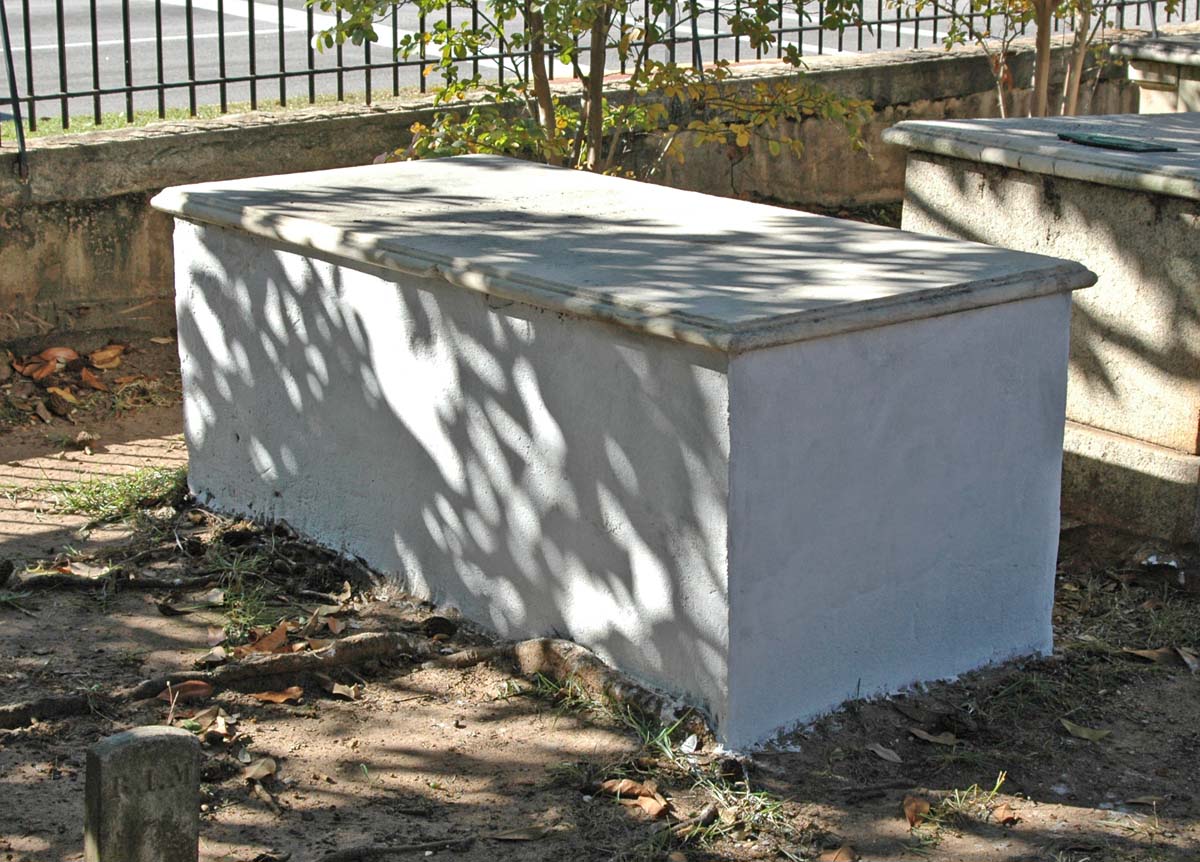
After three coats of Virginia Lime Works whitewash (limewash), the tomb is
taking on its original brilliant appearance. This brightness is one of the
historical characteristics of whitewash that has been lost using modern
coatings. The more coats applied, the longer the whitewash will hold up, but
these three coats should provide satisfactory service for about three years.
|